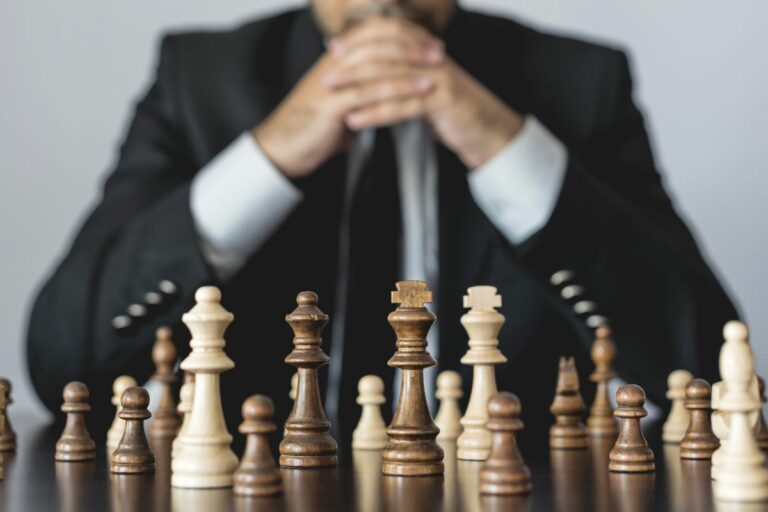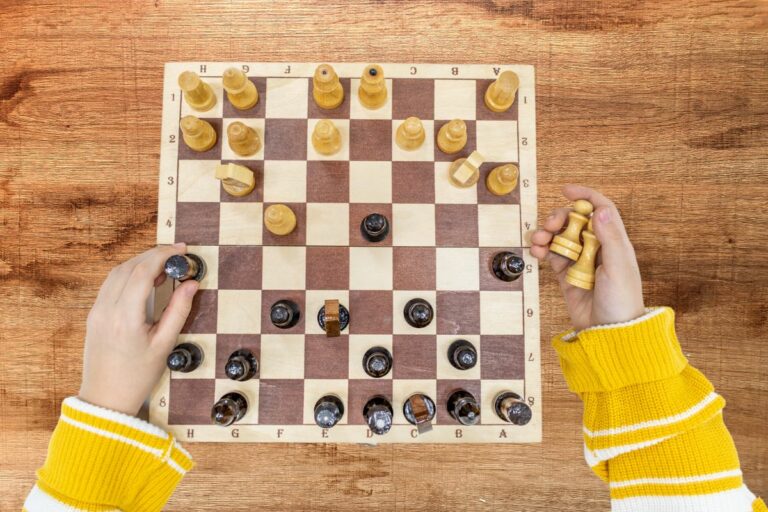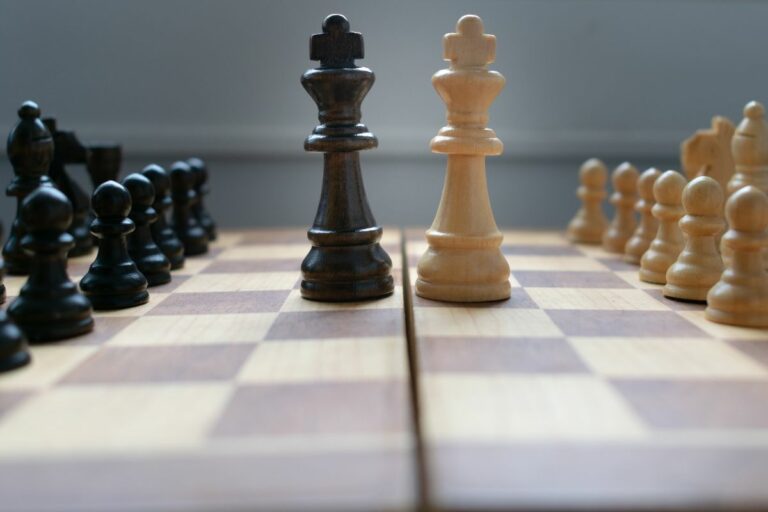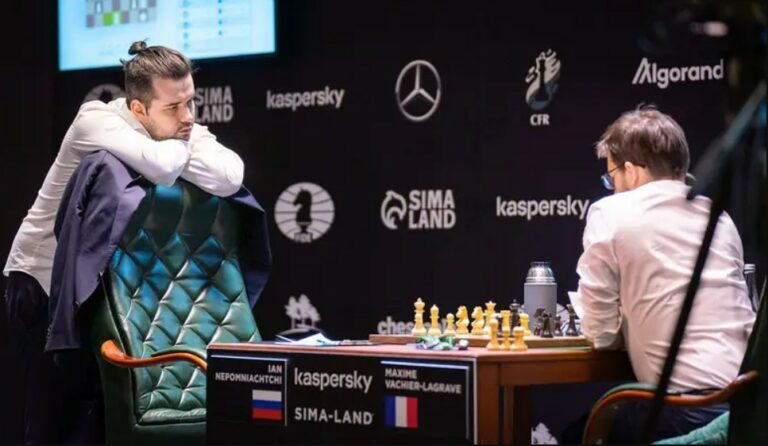Why Do Chess Players Offer Draws? 6 Scenarios Explained
In chess, professional players frequently propose draws and accept them. Draws appear to be quite uncommon in casual play, although they can be very common in tournaments.
Naturally, accepting or proposing a draw when you’re winning seems stupid, but what if it’s not a black-or-white situation? Why do chess players offer draws in the first place?
Chess players offer a draw if the position is equal or stale and there is no clear way of moving the position forward without taking a substantial risk. They also offer a draw if the game is headed toward a forced draw (such as a threefold repetition, lack of checkmating material, or a stalemate).
When should I accept a proposed draw, and when should I offer one? All your questions are answered in this post!
Why Do Chess Players Offer Draws?

If you’re a fan of watching live chess games or have been playing chess for a while, you may witness that almost all chess players offer a draw at some point, sometimes even when it seems they can play on for a bit more and try to eek out a win.
It might be a little confusing, especially if you’re new to chess. So why do they do it?
Motives play a large role in a chess player’s decision to offer a draw.
For instance, if your goal is to improve your chess skills, playing on from a position that professionals would deem drawn can be beneficial if you haven’t fully grasped how to sustain the draw from that position. This means that you get to learn how to keep the position equal and not take any risks or make any strategic moves that worsen your position.
You may also want to offer a draw if you are in a slightly better position but with less time on the clock, so you are not sure if you are going to be able to take the point and would rather take the 0.5 points and go home instead.
Offering a draw may also make sense if all that was left to do in the game is the boring application of endgame theory in an equal position.
I mean, who wants to play a pawns endgame when you know that if you are both familiar with triangulation and opposition? what purpose does playing on get you other than showing disrespect to your opponent by signaling that you think he will mess it up in such a simple position?
However, you may not want to offer a draw if you have a time advantage and want to press your opponent on the clock so they could slip and make a mistake or lose on time.
So, what are the reasons we’re talking about?
Insufficient mating material
Chess players frequently offer a draw when they don’t have enough pieces. Imagine you’re playing a friend, and the game ends in one of these three possibilities:
- King vs. King and a Knight
- King vs. King (a little uncommon but possible)
- King vs. King and Bishop
Do you anticipate a win in the following situations? If you already know that your game is about to end in a draw sooner or later, does it make sense to keep going?
As a general rule, in most positions, you can not checkmate with less than 5 points of material.
This means that in a king-vs-king endgame if you don’t have at least a knight and a bishop, you will not be able to checkmate. Even if you do have a knight and a bishop, giving the checkmate is actually quite difficult with this combination. Pawns are excluded from this rule of thumb, of course, because you can always promote to queen.
Professional chess players who have been playing chess for years get better at foreseeing these situations. They can see a draw from a mile; therefore, they offer it earlier than other players.
Stalemate

When a player’s king is not in check but does not have any legal moves, the game ends instantly in a stalemate. Keep in mind that you can not pass or NOT make a move in chess, that’s why the game ends if you have no legal moves.
Because they haven’t mastered some of the fundamental checkmate strategies, new players frequently have a significant material advantage but cannot checkmate.
However, at elite levels, stalemates almost never happen unless it’s following an intricate and forced combination that enables the losing side to get a draw. The player chooses to draw in this instance rather than waste time once they realize the forced combination they are heading into.
Lots of Repetition
A player may decide to end the game in a draw if the moves repeat once or twice and they realize they are heading into a 3-fold repetition with no way out of it.
If the draw is not accepted, the first player making the moves will declare a draw when the same position is repeated three times per the threefold repetition rule anyway.
Almost every chess player has encountered such a rule at some time in their chess career. But only a small percentage of people fully get it, largely because they believe it only applies to moves made in succession; they don’t understand what “the same position” actually refers to.
The threefold repetition rule is valid to apply if the player achieves the same position multiple times throughout the game. For instance, The threefold repetition applies if the identical position happens in movements 20, 30, and 40.
Feeling Tired
Chess is a mentally and physically exhausting game. It takes a lot of resources from your body to stay focused for hours, that’s also why chess burns a lot of calories.
Growing tired while thinking and making moves frequently happens in professional tournaments, especially if the game has been going on for too long. Chess players will agree to a draw if they think the game is headed toward a draw, which helps players prepare for the next game while also saving them time and energy.
Protecting the Ego of the Opponent
Too many casual chess players get offended when they lose as they perceive defeat as a moral setback or evidence of their opponent’s superiority.
If your opponent is your employer or an older relative, and they are kind of a sore loser, offering a draw might be a good decision in order to be polite. After all, it’s okay to sacrifice a win in order to keep a functional relationship in the real world!
Low-stakes
One player may genuinely be at the lead, but if it requires grinding out a challenging endgame in order to turn that advantage into a point, the player may decide that it is not worthwhile to continue the game, especially if the stakes are low.
Lack of Skills
Okay, this is not common among professional players. However, it’s a very common occurrence for amateur players to propose a draw because they both have no skills to help them force a win or because they simply don’t see their position for what it truly is.
Amateurs can waste dozens of minutes trying to find a checkmate while playing the abilities circle. So instead of continuing with this tedious tactic, they decide to call it a draw.
Is It Unacceptable to Offer a Draw in Chess?

In most situations, the process of offering, accepting, or rejecting a draw is totally acceptable. At the high levels, chess players only offer a draw when they already believe their opponent will likely accept it.
However, in some situations, it is not okay to offer a draw. For example, a draw offer when you are undoubtedly losing is disrespectful.
The proper course of action is to lose or resign if your opponent is in a winning position and is capable of driving the point home. If they have a superior chance of winning, suggesting that the game should end in a draw is suggesting that either you don’t see them as winning, which is an insult to yourself as a chess player, or that they can not convert the advantage they have into a win, which is an insult to her or him as a chessplayer.
If you are in a better position than your opponent, you see no winning moves in the game, or you both just want to get the game over with quickly, then it’s acceptable to propose a draw.
However, carefully consider the scenario before proposing a draw to avoid coming out as impolite or lacking in a sporting spirit. Offering a draw might occasionally be inappropriate and even not allowed.
Offering a draw when the game is pre-agreed on as a draw is against FIDE rules and will get you both punished for it. I have a full guide on when is it okay and when is it bad to draw in chess here that I highly encourage you to check out as it will actually give you everything you need to know about draws and draw offers in chess in both the terms of acceptable etiquette and the laws of chess organizations.
How to Politely Offer a Draw to an Opponent?
The right technique is to move, declare, “I offer a draw,” and start the clock. Instead of interrupting your opponent’s mental process, you may make a move, start the clock, and then swiftly say, “I offer a draw.” Your opponent can say that they accept your draw verbally or by simply shaking your hand and stopping the clock, and they can reject the draw offer either verbally or by making a move and pressing the clock.
This means that if your opponent makes a move, and then a few moves later they decide that it was better to accept the draw, they can no longer accept it because it ended with them pressing the clock.
What Are the Different Types Of Chess Draws?
There are three types of chess draws, according to FIDE. The more you understand them, the more you can offer and accept a draw more professionally. Here are these types:
Draw by Agreement
A draw by agreement is among the simplest and most popular ways to end a chess game.
Professionals use this type to call it a day in a simple professional way.
When both players think the game should conclude in a draw because neither side has a chance to win, one player initiates the draw proposal, and the other player usually agrees.
Draw upon claim
Following the threefold repetition or 50-move rule, a chess game is a draw (check the repetition part). The methods for asserting such rules may differ depending on the laws of a particular tournament, but both have been standardized to be applicable in every chess game.
Remember, these guidelines apply if one of the players makes a claim for them. If one of the players is not attentive enough to make a claim, the game continues.
Intervention
This type differs a little bit from the other two since neither of the players is involved. Usually, both players accept that a position is a draw; one player initiates a draw to the opponent or asserts the draw to the arbiter.
The arbiter may intervene and declare a draw if the player is unfamiliar with such procedures.
What Is a Grandmaster Draw?
A “Grandmaster draw” is the colloquial term for a draw by agreement after less than 20 moves in which neither player makes a significant effort to win. A Grandmaster draw is presumably called that because it frequently occurs between players of high standing.
Last Word
So, what should you do with all of this information? Simple. Learn, memorize, and practice all possible draw scenarios.
When you learn them, you can take advantage when necessary, either by avoiding the draw position if you are on the winning side or proposing one if you don’t want the game to end in your loss. Oftentimes, this half-a-point can make the different between ranking in a tournament and not, so it pays to know your rules.
If you did find this article helpful, please consider sharing, as it can help this little site grow 🙏







